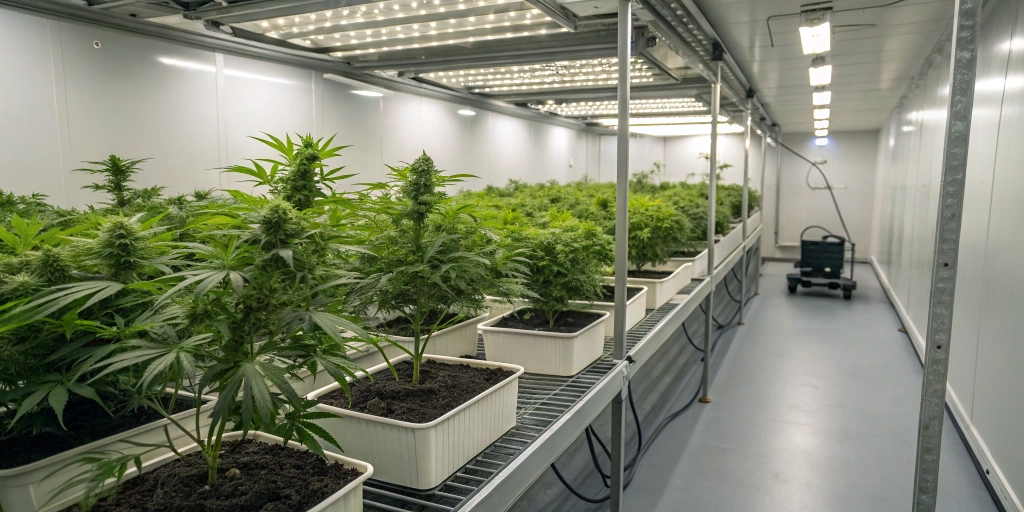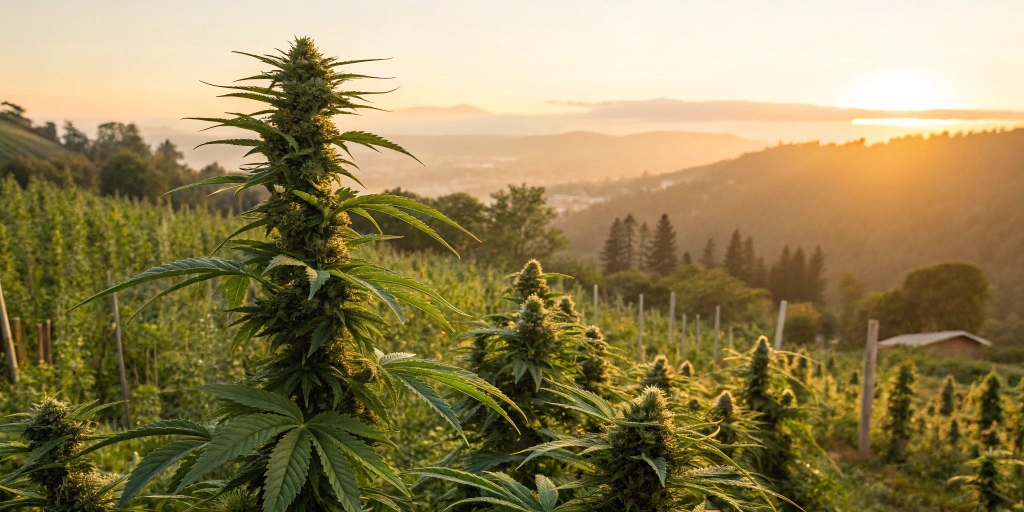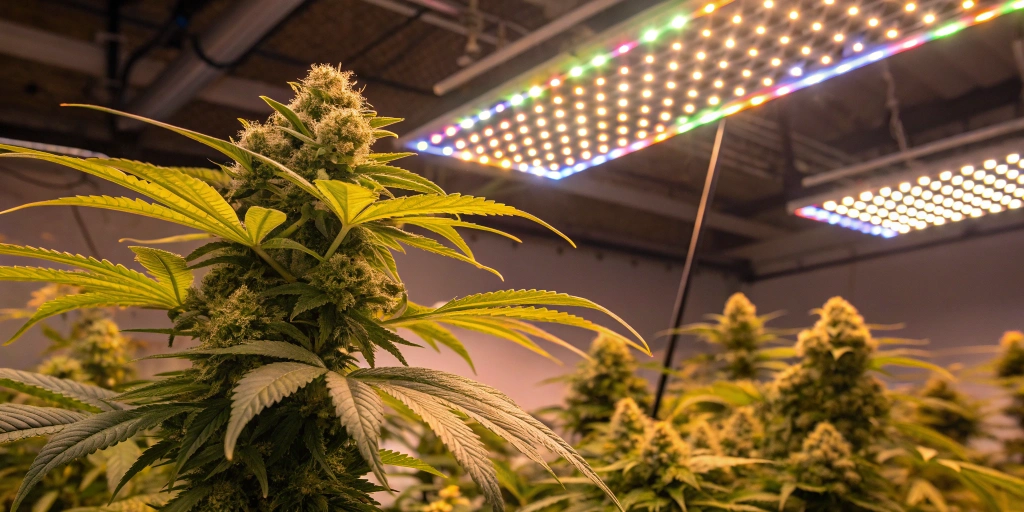Haze Berry Auto strain: Exceptional Genetics and Effects
Origins and Genetics
Haze Berry Auto strain originates from a carefully engineered genetic blend that combines the energetic zest of classic haze with the sweet allure of ripe berries. The genetics have been meticulously selected to produce an auto-flowering plant that thrives both indoors and outdoors. Its compact structure and predictable growth pattern ensure that each cycle results in high-quality buds with a distinct, refreshing aroma.
This strain’s lineage is designed to deliver both recreational and medicinal benefits by promoting vigorous growth and consistent yields. The genetic foundation supports a robust flowering cycle that rewards growers with resin-rich, aromatic buds. Haze Berry Auto strain’s heritage makes it a favored choice among cultivators who value reliable performance and a unique flavor profile.
Effects and Potency
Haze Berry Auto strain produces a balanced high that uplifts the mind while providing gentle physical relaxation. Its THC levels are carefully maintained, ensuring a clear, energizing buzz that inspires creativity without overwhelming sedation. The effects are both stimulating and calming, allowing for a smooth transition between active daytime use and a relaxed evening state.
The flavor profile of Haze Berry Auto strain is equally impressive, offering bright citrus notes intertwined with a sweet berry finish. Users report that the aromatic buds deliver a refreshing taste that is both crisp and complex. The harmonious blend of effects and flavor has made Haze Berry Auto strain a popular choice among those seeking a versatile and enjoyable cannabis experience.
Environmental Requirements for Growing Haze Berry Auto strain
Setting Up the Growing Cannabis Space
Creating an optimal growing space is fundamental for successfully cultivating Haze Berry Auto strain. Choose a location that allows for ample ventilation, controlled lighting, and stable temperature and humidity levels. Whether you use a dedicated grow room, a compact tent, or a small indoor setup, the area should be clean and equipped with essential tools like fans, carbon filters, and timers to ensure that the plant receives consistent care.
A well-arranged space maximizes light distribution and airflow, which simplifies routine tasks like watering and monitoring. This organized setup minimizes stress on the plants, thereby enhancing their overall growth and increasing the chances of producing dense, resinous buds that capture the unique citrus and berry flavors of Haze Berry Auto strain.
Temperature and Humidity
Maintaining stable temperature and humidity levels is vital for Haze Berry Auto strain. During the vegetative stage, keeping temperatures between 70°F and 80°F promotes vigorous growth, while slightly lower temperatures during flowering enhance resin production. Humidity should be maintained around 50–60% in the early stages, then reduced to 40–50% during flowering to prevent mold and mildew. These conditions ensure optimal nutrient absorption and healthy development throughout the plant’s life cycle.
Indoor Cannabis Cultivation
Advantages of Growing Indoors
Indoor cultivation provides complete control over environmental factors, which is especially beneficial for growing strains like Haze Berry Auto and Runtz Autoflower. This method protects the plant from unpredictable weather and pest infestations while allowing for precise adjustments in light, temperature, and humidity. Managing these variables carefully results in uniform, high-quality buds even in limited spaces, making indoor growing a reliable option for consistent production.
Indoor setups also enable year-round cultivation, independent of seasonal variations. Whether you’re working in a small grow room or a dedicated space, the ability to fine-tune every aspect of the environment ensures that Haze Berry Auto strain consistently produces robust, resinous buds that meet high standards of quality and potency.
Lighting Needs
For indoor cultivation, proper lighting is essential to maximize the yield and quality of Haze Berry Auto strain. Full-spectrum LED or HPS lights provide the energy required for vigorous vegetative growth and potent bud development during flowering. Position the lights at an optimal distance from the canopy to prevent heat stress while ensuring even light distribution. A consistent light schedule, typically an 18-hour light and 6-hour dark cycle during vegetative growth, followed by a 12/12 cycle during flowering, is crucial for promoting dense, resinous bud formation and achieving maximum yield.

Outdoor Cannabis Cultivation
Best Conditions for Outdoor Growth
Haze Berry Auto strain thrives outdoors under sunny, warm conditions with good natural airflow. Select a location that receives at least six hours of direct sunlight daily; natural light not only boosts growth but also enhances terpene production, intensifying the strain’s citrus and berry flavors. The soil must be well-draining and rich in organic matter to support vigorous growth and yield high-quality buds.
A favorable outdoor environment also requires some protection from extreme weather. Choose a sheltered spot that mitigates heavy winds and intense rain, yet still provides ample sunlight. With the right conditions, outdoor cultivation of Haze Berry Auto strain can produce impressive, aromatic buds that rival those grown indoors.
Growing Season
Timing is critical for outdoor cultivation. Plant Haze Berry Auto strain seeds in early spring when temperatures are reliably warm and the risk of frost is minimal. This allows the plant to fully utilize the long, sunny days of summer, with the growing season extending into early fall before cooler weather sets in. A well-planned growing season maximizes light and warmth, leading to vigorous growth and a bountiful harvest of aromatic, resinous buds.
Monitoring local weather patterns and adjusting planting schedules accordingly will help ensure that the plant develops under optimal conditions, resulting in a robust and abundant crop.
Advantages of Growing Haze Berry Auto strain
Haze Berry Auto strain offers significant advantages to cultivators who value efficiency and quality. Its rapid growth cycle and auto-flowering trait enable quick turnovers and consistent yields, making it an excellent option for those with limited space or time. The strain’s genetic stability ensures predictable performance, and its robust bud production maximizes every square inch of your growing area. This efficiency not only reduces cultivation time but also allows for repeated cycles within a single season.
Additionally, the balanced effects and unique citrus-berry flavor profile appeal to a wide range of users, further increasing the strain’s popularity. The reliable performance of Haze Berry Auto strain makes it a practical and rewarding choice for both novice and experienced growers, ensuring that every harvest meets high standards of quality and potency.
Problems in Cultivating Haze Berry Auto strain
Overwatering
Overwatering can damage the delicate root system of Haze Berry Auto strain by causing root rot and fungal infections. It is essential to allow the soil to dry slightly between waterings and use containers with proper drainage. Adjust your watering schedule based on the plant’s needs rather than following a fixed routine, as overhydration can lead to stunted growth and reduced yield.
Pest Infestations
Pests such as spider mites, aphids, and thrips can quickly undermine the health of Haze Berry Auto strain if left unchecked. Regular inspections and the use of organic pest control measures help manage these threats. Early detection and prompt treatment are critical to preventing infestations that may compromise both yield and bud quality.
Mold and Mildew
Mold and mildew present significant challenges during the flowering stage when dense buds create a humid microenvironment. High humidity and poor airflow can trigger fungal growth that damages the plant and diminishes bud quality. Controlling humidity, improving ventilation, and promptly removing any affected areas are essential to prevent fungal infections and maintain the integrity of the harvest.
Similar Strains
Blue Dream Auto
Blue Dream Auto is a popular, easy-to-grow strain that offers a balanced, uplifting high paired with a gentle body relaxation. It produces dense, resinous buds with a sweet, berry-like aroma that appeals to many users. Its fast, auto-flowering cycle and high yield make it ideal for growers with limited space, while its consistent performance makes it a reliable choice for both beginners and experienced cultivators.
White Widow Auto
White Widow Auto is known for its strong, well-rounded effects and dense, resinous buds. This strain offers a balanced high that boosts creativity and energy while providing a calm body sensation. Its auto-flowering trait simplifies cultivation, making it perfect for those with small grow spaces and for growers seeking a strain with reliable, high-quality yields and a classic, earthy flavor profile.
Critical Auto
Critical Auto is renowned for its rapid growth and impressive yield potential in compact spaces. This strain produces large, dense buds with a pungent, earthy aroma and hints of sweetness. Its auto-flowering characteristic ensures that it matures quickly, making it a favorite among urban growers and beginners alike who are looking for a strain that is both easy to cultivate and highly productive.
Week-by-Week Growth Plan for Haze Berry Auto strain
Week 1 – Germination and Seedling Stage
Begin by soaking Haze Berry Auto strain seeds in water for several hours, then place them between moist paper towels in a warm, dark environment until taproots emerge. Once visible, gently transfer the seeds into small pots with a well-draining medium. Maintaining consistent warmth and humidity establishes a robust root system and lays a strong foundation for future growth.
Week 2 – Early Seedling Growth
In the second week, the seedlings start to show their first true leaves and gradually increase in size. Provide gentle, indirect light and keep the soil moist but not saturated. This stable environment supports effective photosynthesis and builds the initial strength required for rapid future development, ensuring the plants adapt well to their new conditions.
Week 3 – Continued Seedling Development
During week three, the seedlings continue growing larger and developing an expanded root system, with additional sets of leaves emerging steadily. Increase light exposure gradually while maintaining a balanced watering schedule. This stage is essential for strengthening the plant’s structure and setting the stage for the vigorous vegetative phase to come.
Week 4 – Vegetative Growth Begins
At the start of week four, Haze Berry Auto strain enters the vegetative phase, showing noticeable increases in size and vigor as leaves expand and stems thicken. Adjust light intensity and initiate a structured watering schedule, incorporating a low dose of nitrogen-rich fertilizer to encourage rapid growth and establish a robust framework for bud production.
Week 5 – Accelerated Vegetative Growth
In week five, vegetative growth accelerates as the plant expands rapidly, producing abundant foliage and stronger branches. Continue regular feeding and maintain steady watering while employing low-stress training techniques to shape the canopy and promote even light distribution, building a resilient structure for heavy bud development.
Week 6 – Preparing for Flowering
By week six, early signs of flowering appear with small bud formations and subtle changes in leaf color. Adjust the nutrient regimen by reducing nitrogen and increasing phosphorus and potassium to support bud initiation, while continuing low-stress training and monitoring environmental conditions closely to prevent stress during this sensitive transition.
Week 7 – Transition to Flowering
Week seven marks the transition to the flowering phase as indoor growers switch to a 12/12 light cycle. Small buds begin to emerge as the plant shifts its energy from vegetative growth to bloom production, and nutrient schedules are adjusted to favor bloom-specific supplements. Stable conditions during this critical phase help minimize stress and set the stage for robust bud development.
Week 8 – Early Flowering
In week eight, the early stages of flowering become more pronounced as buds form and increase in density. The plant channels energy into developing thicker bud clusters, while nutrient delivery is fine-tuned to favor phosphorus and potassium. Consistent observation during this phase is key to ensuring optimal bud development without signs of stress.
Week 9 – Mid-Flowering
By week nine, the buds become more prominent as resin production increases and trichomes begin shifting from clear to milky. Adjust nutrient management to support robust bud development while avoiding nutrient burn, with frequent inspections ensuring that environmental conditions remain ideal during this pivotal stage.
Week 10 – Bud Development
During week ten, the buds are well-formed and continue to mature in density and size, with resin production intensifying and the aromatic profile becoming more pronounced. Maintain careful nutrient management and stable environmental conditions to support full bud development, ensuring that every bud reaches its optimal potential.
Week 11 – Late Flowering
In week eleven, the plant enters the late flowering phase, with trichomes beginning to show hints of amber as the buds become denser and more resinous. Continue balanced nutrient delivery and stable conditions to support the final burst of bud maturation, with frequent checks addressing any last-minute issues before harvest.
Week 12 – Harvesting Time
Week twelve is when Haze Berry Auto strain is ready for harvest. At this stage, trichomes display a mix of milky and amber hues, and the buds are dense and richly resinous. Carefully cut the plant, trim any excess foliage, and hang the branches in a dark, well-ventilated space to dry for 7–10 days, preserving both flavor and potency.
Week 13-14 – Curing the Buds
During weeks thirteen and fourteen, focus on curing the harvested buds to enhance their flavor and potency. Once the buds have dried, transfer them into airtight glass jars and open the jars daily during the first week to release excess moisture, gradually reducing the frequency of openings. This careful curing process allows the buds to stabilize and develop a smoother, richer profile, yielding a premium final product that reflects the meticulous care invested throughout the growth cycle.

FAQs about Haze Berry Auto strain
What is the typical THC content of Haze Berry Auto strain?
Haze Berry Auto strain typically contains THC levels ranging from 18% to 24%, offering a balanced high that uplifts the mind while gently relaxing the body. This range is maintained through precise breeding and careful cultivation, ensuring each harvest delivers consistent potency and an enjoyable, clear-headed experience suitable for various users.
How long does it take for Haze Berry Auto strain to flower?
Haze Berry Auto strain generally flowers within eight to ten weeks after switching to a 12/12 light cycle. This relatively short flowering period is ideal for cultivators seeking quick turnovers and efficient production. The auto-flowering trait ensures a smooth, predictable transition from vegetative growth to blooming, resulting in consistent yields and making it a popular choice for those with limited space.
What flavor profile can I expect from Haze Berry Auto strain?
Haze Berry Auto strain offers a vibrant flavor profile characterized by a refreshing mix of citrus and sweet berry notes, complemented by subtle herbal undertones. The aromatic buds deliver a crisp, invigorating taste that evolves on the palate, providing a memorable sensory experience that perfectly matches its balanced, uplifting effects.

